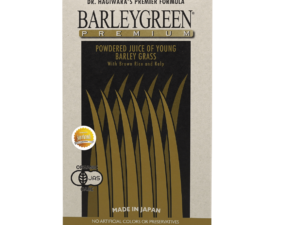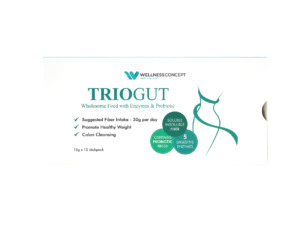Did you know over 20% of adults worldwide struggle with irregular bowel movements? This common issue often stems from lifestyle habits, stress, or even underlying gut conditions. For many, finding lasting relief feels like navigating a maze without a map.
Balancing digestive wellness isn’t just about eating more roughage. It’s about strategically selecting nutrients that work with your body, not against it. The right approach can support gut motility, nourish healthy bacteria, and promote regularity—without unwanted side effects.
Wellness Group, your trusted partner in digestive health, created this guide to simplify the science. You’ll discover how different fibers interact with your system and learn actionable steps to tailor your intake. From hydration tips to portion control, we’ll cover what truly matters for long-term comfort.
Key Takeaways
- Not all fibers function the same way in the digestive system.
- Hydration plays a critical role in fiber effectiveness.
- Gradual dietary changes help prevent digestive discomfort.
- Combining soluble and insoluble varieties optimizes results.
- Lifestyle adjustments enhance fiber’s benefits for gut health.
Introduction to Fiber and Digestive Health

Click to LEARN MORE
Maintaining a healthy digestive system often starts with what’s on your plate. Plant-based compounds called dietary fiber play a starring role in this process. Unlike other nutrients, these carbohydrates resist digestion, traveling intact through your digestive tract to deliver unique benefits.
Overview of Dietary Fiber Benefits

Click to LEARN MORE
This natural cleanser does more than just sweep waste through your system. It feeds the trillions of bacteria in your gut, creating a balanced environment for optimal health. Studies show consistent intake strengthens immune responses and improves nutrient absorption – key factors often overlooked in digestive enzyme production.
The Role of Fiber in Easing Constipation
When movement slows in the digestive tract, discomfort follows. Soluble varieties absorb water to soften stool, while insoluble types add bulk. Together, they trigger rhythmic muscle contractions that keep your bowel schedule predictable. This dual action explains why whole foods often outperform supplements.
| Fiber Type | Primary Action | Common Sources |
|---|---|---|
| Soluble | Softens stool | Oats, apples, beans |
| Insoluble | Adds bulk | Whole grains, carrots |
| Resistant Starch | Feeds gut bacteria | Cooked-cooled potatoes |
Balance matters most. Overdoing one type can lead to bloating or gas. Start with small portions of diverse plant foods – your gut microbiome will thank you later.
Understanding Fiber Types: Soluble vs Insoluble
Navigating the world of dietary fibers can feel like learning a new language. Two primary types work together like orchestra conductors—each playing distinct roles to harmonize gut function.
Characteristics of Soluble Fiber
This variety dissolves in water, forming a gel that slows digestion. Think of it as nature’s cushioning agent—softening stool while helping manage cholesterol levels. Oatmeal mornings or roasted Brussels sprouts make excellent sources.
Kidney beans and citrus fruits also shine here. Their sticky texture isn’t just for taste—it’s your gut’s ally in creating smoother transitions.
Benefits of Insoluble Fiber
Unlike its soluble cousin, this type stays intact through digestion. It acts like a gentle broom, sweeping waste through your system efficiently. Crunchy veggies like spinach or almonds deliver this roughage beautifully.
Popcorn offers a tasty snack option packed with insoluble benefits. Paired with hydration, these sources help maintain steady rhythms without overwhelming sensitive systems.
“Balancing both varieties is like having a toolkit—each tool solves different challenges.”
Many whole foods—like sweet potatoes or barley—contain both types. This natural combo simplifies meal planning while supporting predictable digestion. Choosing diverse plants ensures you harness their full potential.
How Fiber Improves Bowel Movements and Gut Motility
Your gut hosts a bustling community of microbes that flourish when fed the right nutrients. These microscopic allies play a surprising role in keeping your digestive system running smoothly. Let’s explore how specific compounds nourish this ecosystem while optimizing physical processes.
Supporting a Healthy Microbiome
Beneficial bacteria feast on certain carbohydrates that reach the colon undigested. This fermentation process produces short-chain fatty acids—key compounds that strengthen intestinal walls and regulate inflammation. Research shows these acids may even influence mood and immunity through the gut-brain connection.
The Science Behind Bulk and Stool Softening
Soluble varieties absorb water like a sponge, creating a gel that eases waste through the intestines. Insoluble types act as nature’s scrub brush, gently scrubbing the intestinal lining. Together, they create the ideal consistency for comfortable elimination.
| Type | Effect on Stool | Impact on Motility |
|---|---|---|
| Soluble | Softens texture | Slows transit for nutrient absorption |
| Insoluble | Adds bulk | Speeds up bowel activity |
| Prebiotic | Supports microbiome | Enhances muscle contractions |
The rhythmic squeezing of intestinal muscles (peristalsis) relies partly on this bulk-and-soften combo. When stool reaches optimal size and texture, nerves trigger coordinated movements that propel waste forward. This explains why balanced intake leads to predictable bathroom visits.
Most people notice changes within 3-5 days of adjusting their diet. Pairing plant-rich meals with hydration amplifies these effects, creating a self-sustaining cycle of bowel movements that feel effortless over time.
Top High-Fiber Foods to Ease Constipation

Click to LEARN MORE
Looking for natural ways to keep your digestive system on track? The solution might be hiding in your grocery cart. Discover nutrient-packed options that deliver results while pleasing your taste buds.

Powerhouse Choices for Daily Meals
Some foods high in roughage outperform others. Check these champions per serving:
| Food | Serving Size | Grams |
|---|---|---|
| Ready-to-eat cereal | ½ cup | 14 |
| Lima beans | 1 cup | 13.2 |
| Artichoke | 1 cup | 9.6 |
| Blackberries | 1 cup | 7.6 |
Crunchy vegetables like kale or roasted Brussels sprouts add texture to meals. Sweet potatoes offer versatility—bake them whole or slice into fries. For quick snacks, try pear slices with almond butter.
Preparation matters. Steaming broccoli preserves more nutrients than boiling. Leave skins on apples and potatoes—that’s where half the fruits vegetables’ goodness hides.
“Mix colors on your plate—different hues mean diverse nutrients working together.”
In Malaysia’s tropical climate, local options shine. Papaya and dragon fruit pack natural sweetness with digestive benefits. Rotate your choices seasonally to keep meals exciting and effective.
Fiber to reduce constipation without diarrhea
Many people experience frustration when trying to improve regularity—either nothing moves or everything moves too quickly. The solution lies in strategic adjustments that respect your body’s unique rhythm.
Start by adding just 3-5 grams of plant-based roughage daily. This gentle approach gives gut bacteria time to adapt. Pair soluble sources like oats with insoluble options such as brown rice. This combo helps firm loose stools while softening hard ones.
| Adjustment Strategy | Action | Benefit |
|---|---|---|
| Gradual Increase | Add 1 new high-fiber food every 3 days | Reduces gas risk by 40% |
| Hydration Pairing | Drink 250ml water with fiber-rich meals | Improves stool texture |
| Fiber Pairing | Combine chia seeds (soluble) with kale (insoluble) | Balances gut motility |
Watch for warning signs like persistent bloating or sudden urgency. These suggest your system needs slower changes. Try steaming vegetables instead of eating them raw—it eases digestion during transitions.
Individual needs vary widely. Someone recovering from digestive issues might tolerate lentils better than bran cereals. Track your responses using a simple journal. For those unsure about their current intake, our guide on signs of inadequate intake offers clarity.
Remember—what works for your neighbor’s bowel movement schedule might not suit yours. Patience and observation turn trial-and-error into lasting success.
Practical Dietary Tips for Increasing Fiber Intake
Making lasting changes to your diet requires more than good intentions—it demands smart strategy. Small, intentional shifts help your body adapt while minimizing uncomfortable symptoms like bloating or cramping.

Gradual Increase to Avoid Gastrointestinal Discomfort
Jumping from 15g to 30g daily? That’s like sprinting before learning to walk. Instead, add 3-5 grams every 3 days. For example:
| Week | Daily Goal | Sample Addition |
|---|---|---|
| 1 | 18-20g | ½ cup oats + 1 pear |
| 2 | 22-25g | Add ¼ cup lentils |
| 3 | 28-30g | Include roasted chickpeas |
Track how you feel. Mild gas for 1-2 days is normal. Persistent discomfort? Slow your pace. Steamed veggies often digest easier than raw during transitions.
Pairing Fiber with Adequate Hydration
Think of water as fiber’s dance partner—they move best together. Without enough fluids, plant compounds can create blockages instead of relief.
“For every 5 grams added to your diet, drink an extra glass of water.”
Try these hydration hacks:
- Sip warm water with lemon before meals
- Use phone reminders if you forget to drink
- Include juicy fruits like watermelon in snacks
In Malaysia’s heat, coconut water offers natural electrolytes. Pair it with high-fiber breakfasts like whole grain roti canai for balanced mornings.
Most people see improvements within 10 days. If symptoms persist, consider food diaries to identify triggers. Your gut’s needs are unique—honor them while building sustainable habits.
Lifestyle Factors for Improved Digestion
True digestive wellness extends beyond the plate—it’s shaped by daily habits that keep your body in motion. Simple choices like staying active and managing stress work hand-in-hand with nutrition to maintain bowel regularity.
The Importance of Regular Physical Activity
Physical activity stimulates natural muscle contractions in the digestive system, helping waste move smoothly. A brisk 20-minute walk after meals can jumpstart sluggish movements. For those feeling bloated, gentle yoga poses like seated twists or child’s pose offer relief.
| Activity | Frequency | Benefit |
|---|---|---|
| Walking | Daily | Boosts gut motility |
| Abdominal massage | 3x/week | Relieves tension |
| Cycling | 2-3x/week | Enhances blood flow |
Warm beverages like teh tarik (pulled tea) or ginger tea complement movement by relaxing intestinal muscles. “Movement acts as a natural stimulant for your gut,” advises Dr. Aminah Lee. “Even a 15-minute walk can kickstart sluggish digestion.”
Stress management matters too—chronic tension disrupts the system’s rhythm. Deep breathing exercises before meals create calm, allowing optimal nutrient processing. Pair these strategies with consistent meal times for predictable bowel patterns.
Remember: Small, sustainable changes create lasting results. Track progress and consult a doctor if discomfort persists beyond two weeks.
Incorporating Fiber-Rich Recipes into Your Daily Meals
Struggling to make plant-based eating both tasty and effective? The secret lies in creative recipes that turn nutrient-packed foods into crave-worthy dishes. With smart combinations, you can enjoy meals that support digestion while keeping your taste buds happy.
Simple Recipes Featuring High-Fiber Ingredients
Start your day with chia seed pudding layered with mashed prunes and sliced apples. This breakfast trio delivers soluble and insoluble benefits in one bowl. For lunch, try a hearty wheat berry salad tossed with black beans, roasted veggies, and a lime dressing.
Snack smart: Blend dates, oats, and sunflower seeds into energy balls. These portable bites offer sustained energy without processed sugars. Dinner could be a spicy lentil curry served over brown rice—a Malaysian favorite that’s gentle on sensitive stomachs.
Meal Planning Tips for Consistent Fiber Intake
Batch-cook versatile bases like quinoa or chickpeas for quick weekday meals. Keep frozen prunes handy for smoothies or oatmeal toppings. Rotate protein sources between lentils, kidney beans, and edamame to maintain variety.
Pre-portion snacks like air-popped popcorn with flax seeds for crunch. For desserts, bake apples with cinnamon and a sprinkle of chopped walnuts. These strategies align with digestive wellness strategies that prioritize long-term gut health.
FAQ
What’s the difference between soluble and insoluble fiber?
Soluble fiber, found in oats and apples, dissolves in water to form a gel-like substance that softens stool. Insoluble fiber, like that in wheat bran and broccoli, adds bulk to stool, helping it move through the digestive tract more efficiently.
Can eating too many whole grains worsen gut issues?
Gradually introducing whole grains like quinoa or brown rice reduces bloating. Pairing them with hydration ensures smoother digestion. Brands like Bob’s Red Mill offer easy-to-digest options for sensitive stomachs.
How do prunes help with sluggish bowel movements?
Prunes contain sorbitol, a natural laxative, and are rich in dietary fiber. Eating 4-5 Sunsweet prunes daily can stimulate gut motility without causing diarrhea when consumed with water.
Are beans safe for people with irritable bowel syndrome?
Soaking lentils or black beans overnight reduces gas-causing compounds. Pairing them with ginger or fennel seeds, as seen in brands like Eden Foods, can ease digestion for those with IBS.
Does exercise improve gut motility as much as diet?
Physical activity, like brisk walking or yoga, stimulates intestinal contractions. Combining movement with fiber-rich snacks like Chia Seed Bars from KIND enhances regularity.
Can chia seeds replace fiber supplements?
Chia seeds provide 10 grams of fiber per ounce. Soaking them in almond milk creates a pudding-like texture, offering a natural alternative to products like Metamucil for gentle relief.
How much water should someone drink with high-fiber meals?
Aim for 8–10 cups daily. Pairing a fiber-packed salad with a glass of water or coconut water ensures smoother digestion and prevents cramping.
Are there quick recipes for busy schedules?
Overnight oats with raspberries or a smoothie with spinach and flaxseeds take minutes to prepare. Brands like Oatly offer pre-made options for on-the-go fiber boosts.






